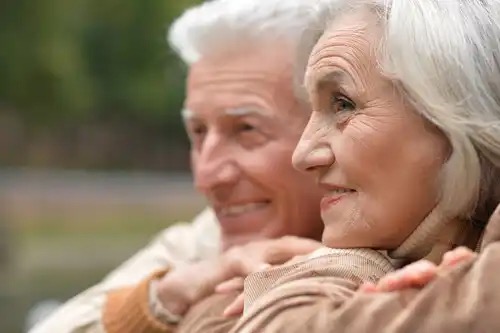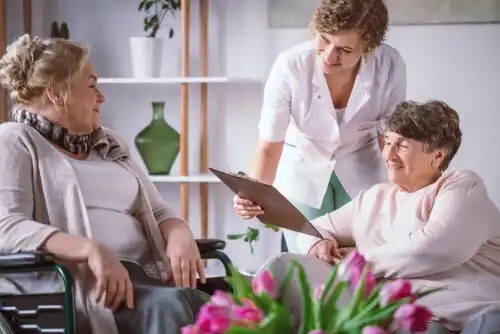Helping the Elderly Stay in Their Own Homes

The increase in the number of elderly people and in life expectancy is leading to tremendous growth in the world population. In fact, the United Nations (UN) claims that the increase in the population of over 65-year-olds is going to become one of the most significant social transformations of the 21st century.
This will have consequences on almost all sectors of society. When people get older, their abilities deteriorate in one way or another. For this reason, we sometimes need alternatives to make life easier for the elderly, particularly those who want to stay in their own homes.
According to the 2019 Revision of the World Population Prospects, in 2050, one out of every six people will be over 65. This equates to 16 percent of the population. The same report estimates that the number of people aged 80 and over will triple from 143 million in 2019 to 426 million in 2050.
Functional deterioration and loss of autonomy in the basic daily life activities often result in institutionalization. However, in this article, we want to talk about the alternatives that exist for the elderly to continue to have a good quality of life throughout their old age.
“When I’m told I’m too old to do something, I try to do it right away.”
-Pablo Picasso-

Aging at home
Nowadays, the housing model has changed a great deal. Currently, senior citizens can maintain their independence and stay at home in many different ways. For example:
- Sheltered housing.
- Intergenerational housing.
- Cohousing.
However, sometimes the elderly want to stay in their own homes. There are ways to facilitate this:
- Remove barriers inside the home. For example, the usage of stairs should be avoided. Thus, a stairlift could be installed. Also, widen the doors to allow wheelchairs through.
- Replace the bathtub with a walk-in shower cubicle. Place grab rails, non-slip flooring, and a chair in the bathroom.
- In the kitchen, put everything at a convenient height. In fact, elderly people shouldn’t have to climb up or bend down to reach anything. The hob should be fitted with a timer and automatic safety shut-off.
- Install smoke detectors and fall alarms.
- Ensure the lighting is good.
- Avoid rugs and ornaments at ground level to avoid tripping and falls.
- Install rails in the corridors to make moving around easier.
Adaptations to the urban environment
As people age, they have more physical limitations. For this reason, they may feel insecure when faced with traffic or architectural barriers.
These environmental difficulties often cause senior citizens to suffer falls and accidents. This makes them feel insecure. Consequently, they become inactive and isolated.
Here are some suggestions for making life easier for the elderly, as proposed by García, Sánchez, and Román (2019).
- Adequately equip public services, such as hospitals, day centers, and senior centers.
- Provide pharmacies, supermarkets, and shops. In fact, any establishment necessary for daily life.
- Eliminate architectural barriers. For example, stairs and steep ramps. Supply sufficient restrooms and seating.
- Provide good signage and lighting for greater safety.

Services and benefits for the elderly
- Teleassistance. A support and prevention service. This is often a public service. It offers immediate advice at the end of a telephone line. This provides reassurance to both the elderly in their homes, as well as their families.
- Home help. Contrary to what many believe, this isn’t a domestic housekeeping service. In fact, it promotes the independence of the elderly, offering them support in their day-to-day basic activities.
- Food delivery service.
- Provision of care in the family environment. This help is in the form of financial assistance given to the main caregiver looking after the elderly person. It might be an alternative for those who don’t want home help or when it isn’t appropriate.
Providing these kinds of resources to the elderly is very important because we all get old. Indeed, quality of life for the elderly is their right and our obligation.
The increase in the number of elderly people and in life expectancy is leading to tremendous growth in the world population. In fact, the United Nations (UN) claims that the increase in the population of over 65-year-olds is going to become one of the most significant social transformations of the 21st century.
This will have consequences on almost all sectors of society. When people get older, their abilities deteriorate in one way or another. For this reason, we sometimes need alternatives to make life easier for the elderly, particularly those who want to stay in their own homes.
According to the 2019 Revision of the World Population Prospects, in 2050, one out of every six people will be over 65. This equates to 16 percent of the population. The same report estimates that the number of people aged 80 and over will triple from 143 million in 2019 to 426 million in 2050.
Functional deterioration and loss of autonomy in the basic daily life activities often result in institutionalization. However, in this article, we want to talk about the alternatives that exist for the elderly to continue to have a good quality of life throughout their old age.
“When I’m told I’m too old to do something, I try to do it right away.”
-Pablo Picasso-

Aging at home
Nowadays, the housing model has changed a great deal. Currently, senior citizens can maintain their independence and stay at home in many different ways. For example:
- Sheltered housing.
- Intergenerational housing.
- Cohousing.
However, sometimes the elderly want to stay in their own homes. There are ways to facilitate this:
- Remove barriers inside the home. For example, the usage of stairs should be avoided. Thus, a stairlift could be installed. Also, widen the doors to allow wheelchairs through.
- Replace the bathtub with a walk-in shower cubicle. Place grab rails, non-slip flooring, and a chair in the bathroom.
- In the kitchen, put everything at a convenient height. In fact, elderly people shouldn’t have to climb up or bend down to reach anything. The hob should be fitted with a timer and automatic safety shut-off.
- Install smoke detectors and fall alarms.
- Ensure the lighting is good.
- Avoid rugs and ornaments at ground level to avoid tripping and falls.
- Install rails in the corridors to make moving around easier.
Adaptations to the urban environment
As people age, they have more physical limitations. For this reason, they may feel insecure when faced with traffic or architectural barriers.
These environmental difficulties often cause senior citizens to suffer falls and accidents. This makes them feel insecure. Consequently, they become inactive and isolated.
Here are some suggestions for making life easier for the elderly, as proposed by García, Sánchez, and Román (2019).
- Adequately equip public services, such as hospitals, day centers, and senior centers.
- Provide pharmacies, supermarkets, and shops. In fact, any establishment necessary for daily life.
- Eliminate architectural barriers. For example, stairs and steep ramps. Supply sufficient restrooms and seating.
- Provide good signage and lighting for greater safety.

Services and benefits for the elderly
- Teleassistance. A support and prevention service. This is often a public service. It offers immediate advice at the end of a telephone line. This provides reassurance to both the elderly in their homes, as well as their families.
- Home help. Contrary to what many believe, this isn’t a domestic housekeeping service. In fact, it promotes the independence of the elderly, offering them support in their day-to-day basic activities.
- Food delivery service.
- Provision of care in the family environment. This help is in the form of financial assistance given to the main caregiver looking after the elderly person. It might be an alternative for those who don’t want home help or when it isn’t appropriate.
Providing these kinds of resources to the elderly is very important because we all get old. Indeed, quality of life for the elderly is their right and our obligation.
All cited sources were thoroughly reviewed by our team to ensure their quality, reliability, currency, and validity. The bibliography of this article was considered reliable and of academic or scientific accuracy.
Aguilar Aguirre, I. (2019). Envejecimiento activo: la vivienda como centro de la estrategia.
García-Valdez, M. T., Sánchez-González, D., & Román-Pérez, R. (2019). Envejecimiento y estrategias de adaptación a los entornos urbanos desde la gerontología ambiental. Estudios demográficos y urbanos, 34(1), 101-128.
Sánchez-García, S. (2018). Envejecimiento y salud. Revista Médica del Instituto Mexicano del Seguro Social, 56(1), 4-5.
This text is provided for informational purposes only and does not replace consultation with a professional. If in doubt, consult your specialist.







